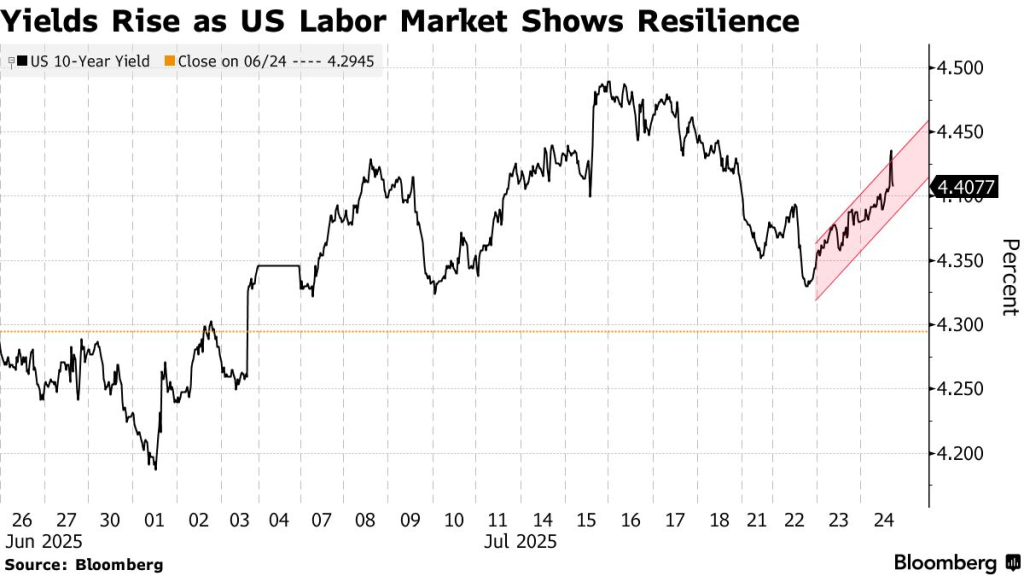- Trump surprised markets when he announced a trade deal with Japan.
- Data on Thursday revealed a mixed picture of business activity in the US.
- 80% of US companies have beaten earnings estimates.
Interest futures were subdued on Friday as Treasury yields remained elevated amid stronger investor confidence in the US economy. Recent progress in trade deals has boosted risk appetite and convinced investors to buy back US assets. At the same time, upbeat data and earnings have pointed to a resilient economy, further supporting yields and weighing on interest futures.
Sentiment about the US economy improved this week as the US made progress in trade talks with its partners. Trump surprised markets when he announced a trade deal with Japan. The deal lowered tariffs on the country from 25% to 15%. At the same time, Japan is supposed to invest more money in the US.
The news increased hopes for more such deals before the August 1 deadline. Notably, European Union officials have said they are nearing a trade deal with the US. In this case, market participants expect the EU to remain with a 15% tariff. This would be lower than the threat of a 30% tariff.
Trade deals are reducing the likelihood of a global trade war. At the same time, they are increasing investor confidence in the US economy. So far, Trump’s tariffs since he took office have had little impact on the economy. Although it has slowed down, it has remained more resilient than most experts expected. The unemployment rate has decreased, and job growth has exceeded estimates.

US 10-Year Yield (Source: Bloomberg)
Data on Thursday revealed that unemployment claims fell again, showing a strong labor market and boosting Treasury yields. Meanwhile, there was a mixed picture of business activity. The services sector expanded more than expected. However, the manufacturing sector unexpectedly contracted.
Elsewhere, market participants paid attention to earnings reports from S&P 500 companies. So far, 80% of those that have reported have beaten estimates. This has boosted risk appetite and sent cash to riskier assets, such as equities. Meanwhile, interest futures have remained mostly subdued.
Further downside pressure for bonds is coming from a decline in Fed rate cut expectations. Upbeat economic data has convinced traders that the Fed might delay cutting rates. As a result, futures show the next rate cut in October. This has supported Treasury yields and hurt interest futures. Moreover, when the Fed meets next week, experts believe Powell will maintain his cautious tone despite pressure from Trump to lower borrowing costs.



